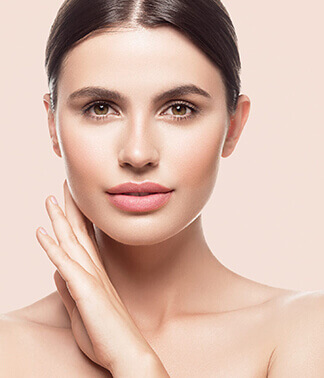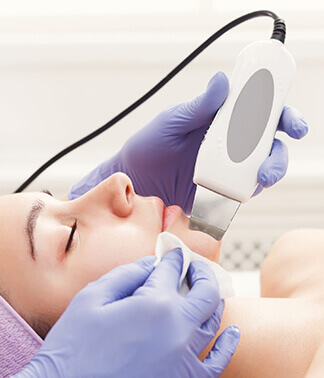Common Eyelid Malpositions

Ectropion:
Ectropion is defined as a condition in which the eyelid margin turns outward. Typically seen in older individuals as a result of senescence, ectropion most commonly affects the lower eyelids. Ectropion can be classified as congenital, involutional, cicatricial, paralytic, or mechanical and ranges from mild cases in which only a segment of the eyelid turns away from the eye, or severe cases in which the entire length of the eyelid is turned out.
Mild cases of ectropion can cause tearing, redness, and discomfort in the eye. More severe, or chronic cases of ectropion can cause recurrent infections, chronic conjunctivitis, and corneal decompensation. If left untreated, ectropion can result in vision loss from corneal scarring and in very severe cases corneal ulceration and even endophthalmitis and loss of the eye may occur.
Most ectropion cases diagnosed are involutional, which are caused by horizontal eyelid laxity in the medial or lateral canthal tendons, usually observed in the lower eyelids. Untreated, involutional ectropion leads to loss of eyelid apposition to the globe and eversion of the eyelid margin. Horizontal laxity can be identified via the snapback test or distraction test. In this test, the examiner pulls on the eyelid to determine the amount of laxity and the time it takes for the eyelid to return to its normal position. In the short term, ectropion may be treated with lubricants and even taping the eyelid into position. Ultimately ectropion must be treated with surgery. Most surgical treatments involve tightening the tendons of the eyelid. Surgery is usually done on an outpatient basis under sedation. Healing is generally quick with a return to normal activities within 10 days or so.
Cicatricial ectropion occurs in the upper or lower eyelids due to an insufficiency of skin in conjunction with thermal or chemical burns, medical or surgical trauma, chronic actinic skin damage, or chronic inflammation. Cicatricial ectropion of is generally treated by releasing the scar tissue and lengthening the eyelid by mobilizing tissue via flaps or with skin grafts.
Mechanical ectropion is due to the effects of various types of eyelid neoplasms. Treatment requires the removal of the mass and repositioning of the eyelid. In cases where the mass is malignant, then it is important to completely remove the mass prior to reconstruction. Most patients with malignant neoplasms require either Mohs surgery or removal with frozen section control.
Entropion:
Entropion is a condition characterized by an inward turning of the eyelid. It, along with ectropion, is one of the most common eyelid malpositions. Entropion can be unilateral or bilateral and classified as congenital, involutional, acute spastic, or cicatricial. Untreated entropion can cause eye irritation, tearing, infections, and corneal disease.
The most common type of entropion is involutional. It occurs most frequently in the lower eyelid due to horizontal laxity of the eyelid, attenuation or disinsertion of the eyelid retractors, and overriding by the preseptal orbicularis oculi muscle. Non-surgical treatment includes frequent topical lubrication and eyelid tape on the eyelid to keep the eyelashes from rubbing against the cornea. Most cases require surgical intervention. There are many ways to surgically treat involutional entropion. Eyelid laxity is addressed by tightening the tendon and the eyelid margin is externally rotated by reinserting the lower eyelid retractors. Surgery is performed on an outpatient basis under IV sedation with rapid healing so you can return to normal activities.
Acute spastic entropion arises from ocular irritation or inflammation. The increasing frequency of orbicularis muscle spasms caused by corneal irritation creates a cycle that perpetuates the problem. The acute entropion usually resolves when treatment of the underlying etiology breaks this cycle. Spastic entropion can be treated with ocular lubricants and Botulinum Toxin injections. Surgery is required when conservative measures fail.
Cicatricial entropion is generally caused by chronic inflammation which shortens the posterior portion of the eyelid and causes an internal rotation of the eyelid margin. Common causes of cicatricial entropion are autoimmune disorders such as ocular cicatricial pemphigoid and Stevens-Johnson, infectious disorders, inflammation, surgery, and trauma. Proper management of cicatricial entropion depends on careful evaluation and observation to determine the cause, severity and features specific to the patient. Cicatricial entropion generally requires surgical intervention involving the release of scar tissue and conjunctival grafting.
Congenital entropion rarely occurs as an isolated incident and is usually part of a syndrome.
Dermatochalasis:
Dermatochalasis is a common condition characterized by the presence of loose, redundant eyelid skin. It is a prevalent sign of aging and in general begins in middle age. It is frequently associated with excess periorbital fat. Patients with severe dermatochalasis experience heaviness around the eyes, brow-aches, and eyelashes in the visual field, and reduction of the superior visual field. Lower eyelid dermatochalasis is considered a cosmetic issue unless the excess skin and prolapsed fat are so extreme that the patient is unable to be fitted with bifocals.
Dermatochalasis is treated surgically by a procedure called blepharoplasty. Upper eyelid blepharoplasties are outpatient procedures and can be performed under local anesthesia or iv sedation. Blepharoplasty is frequently performed with brow ptosis repairs and lower lid blepharoplasty. Upper eyelid blepharoplasty surgery usually has a quick recovery. Sutures are removed at about 7 days and most people return to full activities within 10 to 14 days.
The majority of upper eyelid blepharoplasties are performed for cosmetic purposes. However, it may be covered by insurance if the peripheral visual field is impaired and it interferes with the person’s ability to perform daily tasks such as reading and driving. In general, when the eyelid skin hangs over the eyelid margin and obscures the pupil it is likely interfering with vision.
Floppy Eyelid Syndrome:
Floppy Eyelid Syndrome is a condition of the eyes indicated by ocular irritation, redness, eyelash ptosis, and mild mucus discharge described as worse upon awakening. Such patients experience chronic papillary conjunctivitis and have a superior tarsal plate that is rubbery, flaccid, and the eyelid easily everts. Pathologic examination has concluded patients suffering from floppy eyelid syndrome have significantly decreased elastin fibers within the tarsus. Primary treatment includes viscous lubrication and the implementation of a patch or shield for protection during sleep. If severe, surgical correction is warranted and involves a wedge resection and horizontal eyelid tightening.
Floppy Eyelid Syndrome is a common cause of recurrent conjunctivitis and is frequently misdiagnosed. It is also very commonly associated with sleep apnea. When Floppy Eyelid Syndrome is diagnosed, a sleep study should be performed.




